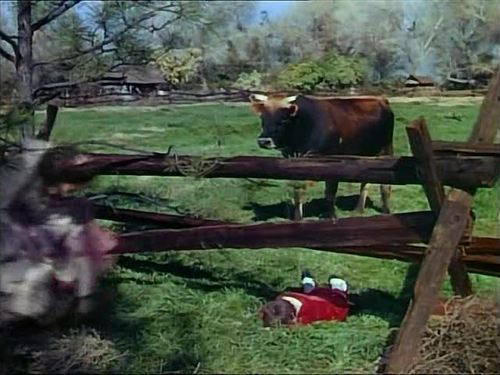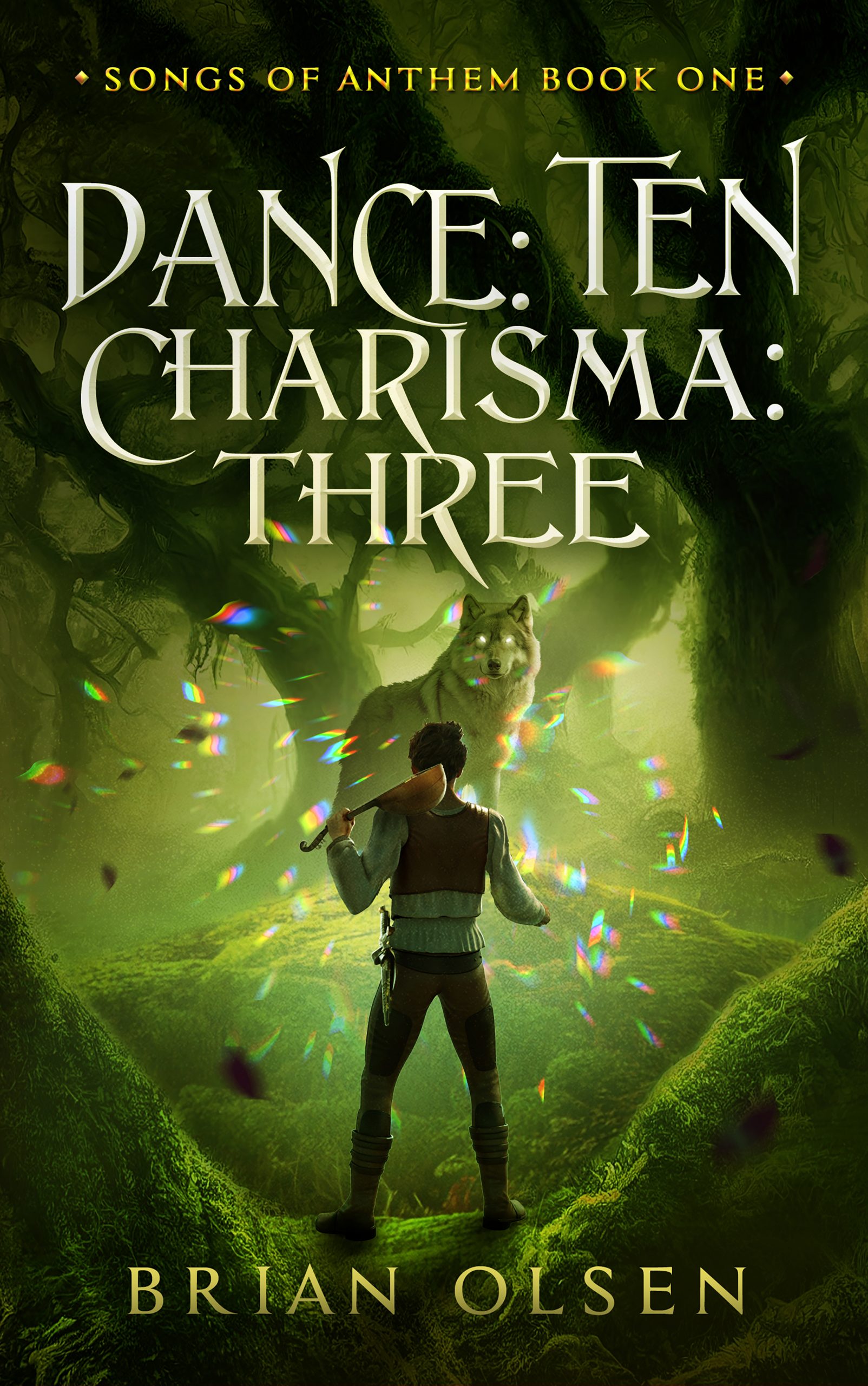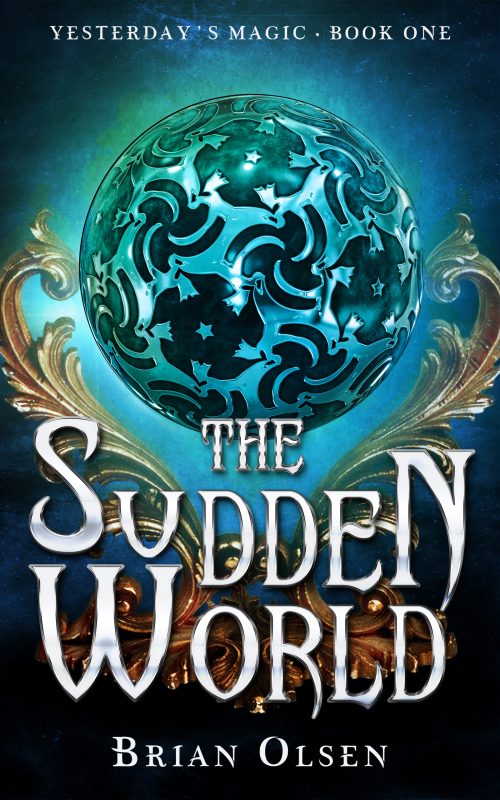Oh, boy. Take a deep breath. Hold your nose, maybe. Here we go. Song of the South (1946) was Disney’s first dramatic live-action film, though it does (thankfully) contain some animated segments. It’s based on the “Uncle Remus” stories of Southern African-American folklore collected by Joel Chandler Harris. And I feel like there’s something else notable about it I’m forgetting…oh, right. It’s kinda racist. I had never seen the film before, and odds are neither have you. Its last release in theaters was in 1986, and it’s never been released for the home market in North America, only overseas (and even then the last release was in the UK in 1991). So, it’s kind of hard to come by. Lucky for you, I’m nothing if not resourceful. So let’s dive in, shall we? (After the cut – this is a long one…)
- The film starts with adorable little Johnny, his parents John and Sally, and their…servant? nanny? mammy?…Aunt Tempy. Oh, hey, look, that’s Hattie McDaniel! They’re on their way from their home in Atlanta to Sally’s mother’s cotton plantation in rural Georgia. John works for a newspaper, and he’s been writing…something…that has people upset, and he has to go back to Atlanta to continue his vaguely defined good work. He’s leaving his wife and son at the plantation where they’ll be safe, and little Johnny is very unhappy about his father leaving. That is, as we say in the business, the “inciting incident” for the movie – Johnny’s absent daddy.
- As soon as they arrive at Gramma’s plantation, Johnny is given Toby, a little black servant of his very own. Toby’s so excited to have a white boy to serve! I’m sure they’ll be the best of friends, just as they would have been in real life. It’s sort of hard to tell when this movie is set. Toby looks to be about eight years old (same as Johnny), and he’s clearly one of the servants. The film goes out of its way to avoid using the word “slave,” but while watching it I assumed that’s what was going on. Reading up on it afterwards, I discovered that the filmmakers’ intention was to set it during Restoration, after the Civil War. But hey, the power dynamic between the rich white folks and the poor black folks is pretty horrific either way. (I had guessed that John was an abolitionist and that was the reason his work at the newspaper was so dangerous, but now I don’t know what the hell he’s supposed to be doing. Theater reviews? The Lonely Hearts column? We never find out.)
- Johnny decides to run away, and on his way out he meets Uncle Remus. He’s heard about Remus from his parents, who got all nostalgic for the great stories Remus told them when they were children. Johnny passes a group of black adults singing Remus’ praises (literally – it’s a remarkably well composed and harmonized song) while the man himself is elsewhere, at a small campfire, telling his stories to a group of black children. White Johnny eavesdrops and Remus is suddenly ALL ABOUT THIS WHITE KID. Fuck the poor black children forced to work as servants, the rich white kid misses his rich white daddy! I hate pretty much everyone in this movie, but I particularly hate Johnny. He is white privilege incarnate and the narrative of the movie rewards him for it. He cries about something in every goddamn scene and his tears are sweet nectar to me.
- Remus offers to run away with Johnny (that’ll go over well with Gramma Plantation Owner, I’m sure), but first – a story! Finally, animation! We start off with Uncle Remus singing “Zip-a-Dee-Doo-Dah,” which I don’t need to tell you is pretty great. He meets up with Br’er Rabbit (whose shirt I love – pink, with a big pointy collar – I’d wear it), who, coincidentally, is also running away from home. We also meet Br’er Fox and Br’er Bear, and I’m not yet sure which of these cartoon animals are good and which are bad, but my sympathies are immediately with Br’er Bear. I like ’em big and stupid.
- Yadda yadda yadda, lesson learned and Remus takes Johnny home. Everybody goes to bed and Remus and Gramma have a friendly chat about how Johnny is missing his Pa. It almost seems like they’re conversing as equals until Remus suggests that Gramma write a letter to Pa and she cuts him off with, “If I want your advice I’ll ask for it.” When does Django get here? Nice night for a fire.
- In the morning Toby comes to Johnny’s room to pour him a basin of water for washing and he’s a goddamn child and he’s working but Johnny throws a pillow and they laugh and it’s okay because they’re friends! Momma Sally comes in and walks right by Toby and doesn’t acknowledge his presence in any way. Doesn’t say hello. Doesn’t even look at him. Johnny is forced to wear a frilly lace collar by his mom because he deserves bad things, I mean because his paternal grandmother is coming for a visit. He ducks out and meets some new kids – hey, look, poor white kids! Not fitting into the noble rich white boy/kind-hearted black servant boy dynamic they are, of course, evil. Except for the pretty little girl, whose dress is dirty so we know she’s poor but whose hair is perfect so we know she’s a main character – her name is Jenny. When Jenny’s evil brothers start chanting, “Look at the little girlie, wearing a lace collar,” I find myself joining in because I hate Johnny so, so much. The incidental music agrees with me as it picks up the tune. Johnny slowly walks away alone, all dejected like Charlie Brown in the rain, and the music taunts him and it’s wonderful. (Toby bolted at the first sign of trouble, as he always does, because of course they’re going to make “being afraid” a primary characteristic of one of the three black leads.)
- There’s a whole thing with Jenny’s dog I’m skipping. Another cartoon brings a welcome break from the racism. “How Do You Do?” is a great song and it makes me wish I were riding Splash Mountain. The mix of animation and live-action is beautiful – a quick sequence of Remus lighting Br’er Frog’s pipe is brilliant. But oh, god, tar baby. (All right, I know, “tar baby” is one of those terms that’s racist only because people thought it sounded racist, and it wasn’t really offensive at the time of this movie. Fine, one point in Song of the South‘s favor, a million against.) Br’er Rabbit is stupid as hell to fall for this trap – he is obviously talking to a hot ball of tar wearing a hat – and he deserves to be eaten. I’m not any fonder of Br’er Fox so I’m hoping Br’er Bear eats them both. Oh, and the lesson of the tar baby story, according to Uncle Remus? “It just goes to show you what comes of mixing up with something you got no business with in the first place.” Holy. Crap.
- Gramma says Johnny needs friends his own age and Sally agrees and suggests a birthday party and neither mentions Toby, who spends every damn waking moment with Johnny. And when Johnny’s told of the party, he also doesn’t mention Toby, only asking if Jenny can be there. So were the filmmakers aware of this and they didn’t want to come out and say “he needs white friends,” or were they unaware of how astonishingly racist they were being by treating the unlikely friendship of the rich white boy and his poor black servant that they themselves had set up as if it didn’t count as a real friendship? I say a little of both.
- Johnny gets trampled by a bull. Hooray! Or something by a bull – there isn’t a mark on him, but he falls into a coma anyway. Die, Johnny, die! The servants are all standing vigil outside the Big House like he’s Princess Diana. Toby is crying. He is not your real friend, Toby! If you were his real friend they’d let you inside! They send for Uncle Remus, who tells Johnny a story which brings him back to life, because elderly Southern black people have magic powers. But Daddy’s decided to stay so Uncle Remus isn’t needed as a father surrogate anymore and he heads back to his shitty little cabin with a smile, just so, so, happy to have been of service to the white people and man, fuck this movie. The film ends with Johnny and his friends singing and playing with all the cartoon animals, and while it’s supposed to be a happy magical ending I prefer to pretend that it’s Johnny in the moment of his death having some kind of Jacob’s Ladder-style hallucination.
- Yipes. This was actually worse than I thought it would be. I mean, it wasn’t Birth of a Nation, I do believe that the fimmakers believed that in showing a friendly relationship between a black man and a white boy that they were making a positive film. But they weren’t. The race relations depicted in this movie are ignorant and idealized, and that’s not just by today’s standards. From what I’ve read about the making of this film and how it was received, it was racist by 1946 standards. And that’s pretty damn racist. Seriously, I could write a whole essay just on Toby. He’s a great example of the double-think of racists who don’t know they’re racists. Their friendship serves two purposes: to give Johnny someone to talk to in scenes where he’d otherwise be alone, and to demonstrate how children don’t judge each other based on superficial differences (hah!). Except, in every other way the narrative of the film reinforces again and again that Johnny has no friends. The contradiction is never acknowledged. Even Johnny’s friendship with Remus, which is the central relationship of the movie, is meant to serve only as a temporary substitute for Johnny’s need for his absent father, and as soon as Pa gets back, Remus is out. The message of the film is exactly the opposite of what Disney said he intended. In Song of the South, friendships between white and black people don’t count.




Excellent commentary to read along with watching the movie. This show ain’t no laughin’ place. Disney is one of my favorite things but this movie does have a real undercurrent of real racism.
One point though, Uncle Remus IS the hero. He becomes more important to the boy than his real father (not magic), and Uncle Remus’ deference to the boy’s father is not necessarily racist but heroic, which I’m sure is the concept of the movie that Disney was going for, however badly executed and racist by today’s standards.
Thanks! I’m glad you liked my random thoughts.
I do agree with your points in the second comment, for the most part. Remus is definitely the hero of the film, in a narrative sense, a structural sense, and even a literal sense. If you take the film as it’s presented, then Remus serves as a father surrogate to a boy who desperately needs one, and kindly steps aside when the boy’s real father returns. That’s a perfectly acceptable basis for a story, and a perfectly fine arc for a film’s protagonist. (I personally feel there are other problems with a story like that, but they’re not really specific to Song of the South, so I won’t bother with them here.)
As you say, though, it’s badly executed and racist. The double-think regarding Toby’s status is a good example of both – having him count as Johnny’s friend when it’s convenient and not when it’s not is bad storytelling as well as racially problematic. I would argue, though, that the problems with the film aren’t just problems by today’s standards – the broad points I’m making were all made by contemporary critics back when the film was released. The filmmakers’ intentions were good, but it was racist then and it’s racist now.
I’m glad you found the post! Thanks for taking the time to read and comment.
Now that Johnny is fully recovered from the bull accident in the field and fully back to life it seems like he and Ginny and Toby will play with Brer Rabbit and all the other animated animal critters from Uncle Remus’s stories and even Teenchie the dog is happy to be alongside them now he isn’t Joe and Jake’s dog anymore after they were told to stop their bullying by Uncle Remus and Johnny was fighting Joe and Jake for pushing Ginny into the mud like that and spoiling her dress like that which wasn’t nice and after they were told to stop their bullying Uncle Remus chased Joe and Jake off the plantation which serves those Favers boys right for bullying Ginny like that and they’ll fully regret it.